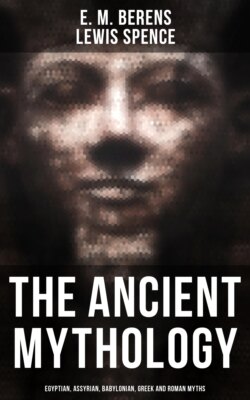Читать книгу The Ancient Mythology: Egyptian, Assyrian, Babylonian, Greek and Roman Myths - Lewis Spence - Страница 132
На сайте Литреса книга снята с продажи.
The Temple of E-Kur
ОглавлениеThe oldest known temple in Babylonia was that of E-Kur at Nippur, sacred to En-lil. It was probably founded somewhere about 4000 B.C., or even at an earlier date. Before the time of Sargon we find the rulers of Nippur embellishing the temple there. The climate of the place necessitated frequent repairs, and by reason of occasional popular revolutions the fabric received considerable damage. We find Urbau about 2700 B.C. building a zikkurat in the temple area at Nippur, and a few centuries afterward Bur-sin repairing this zikkurat and adding a new shrine. E-Kur saw numerous political changes, and when foreign dynasties ruled the land its importance waned somewhat. But later alien rulers shrewdly saw the advantage of restoring its rather tarnished splendour, and we find several kings of the Kassite dynasty (c. 1400 B.C.) so far honouring it as to place within its confines a votive object from Elam, which had originally been placed in the temple of Ishtar at Erech, whence it had been removed by an Elamite conqueror about 900 years before. This was almost as remarkable as if the Stone of Destiny, the Lia Fail, in Westminster Abbey were to be restored to its original seat in Ireland.
The temple at Nippur was at this time dedicated to Bel before that deity was ousted by Merodach. Almost every one of the Kassite rulers made more or less costly additions to the temple at Nippur, and from their several inscriptions we can follow its history down to Assyrian times. About the twelfth century B.C. E-Kur yielded its supremacy to E-Sagila. It was sacked and partially destroyed, until later restored by Assyrian monarchs, who conscientiously re-decorated it and erected many new buildings within its area. But during the new Babylonian period it was once more sacked by order of southern rulers, and at the end of the seventh century B.C. its history comes to a close. Its site, however, did not lose its sanctity, for it was used as a cemetery and partially inhabited till the twelfth century A.D.
